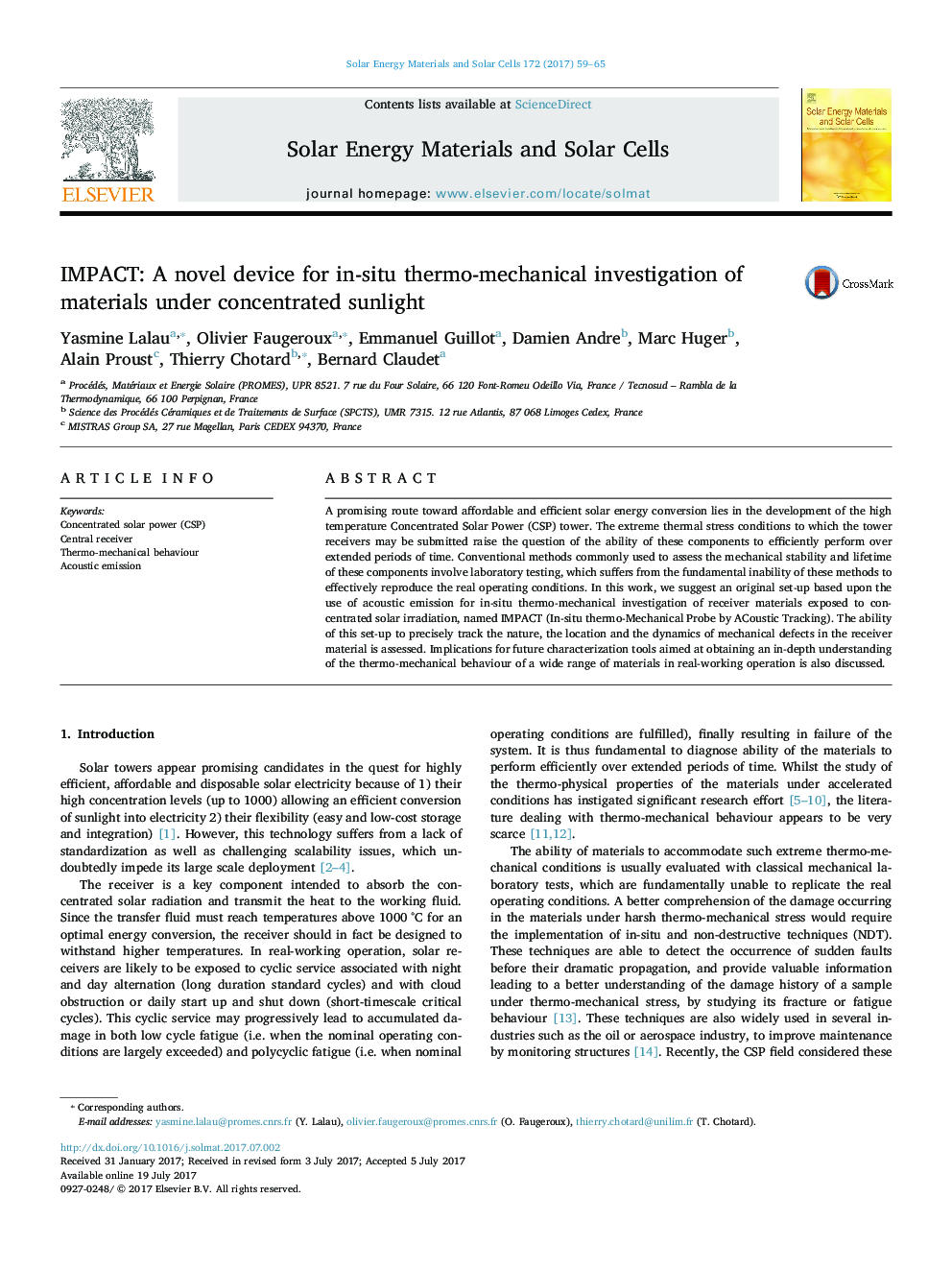| Article ID | Journal | Published Year | Pages | File Type |
|---|---|---|---|---|
| 6456871 | Solar Energy Materials and Solar Cells | 2017 | 7 Pages |
â¢There is a lack in understanding solar receiver in-situ thermo-mechanical behaviour.â¢Acoustic emission has been selected to detect early stage microstructural changes.â¢An innovative acoustic set-up has been developed and successfully tested.
A promising route toward affordable and efficient solar energy conversion lies in the development of the high temperature Concentrated Solar Power (CSP) tower. The extreme thermal stress conditions to which the tower receivers may be submitted raise the question of the ability of these components to efficiently perform over extended periods of time. Conventional methods commonly used to assess the mechanical stability and lifetime of these components involve laboratory testing, which suffers from the fundamental inability of these methods to effectively reproduce the real operating conditions. In this work, we suggest an original set-up based upon the use of acoustic emission for in-situ thermo-mechanical investigation of receiver materials exposed to concentrated solar irradiation, named IMPACT (In-situ thermo-Mechanical Probe by ACoustic Tracking). The ability of this set-up to precisely track the nature, the location and the dynamics of mechanical defects in the receiver material is assessed. Implications for future characterization tools aimed at obtaining an in-depth understanding of the thermo-mechanical behaviour of a wide range of materials in real-working operation is also discussed.
